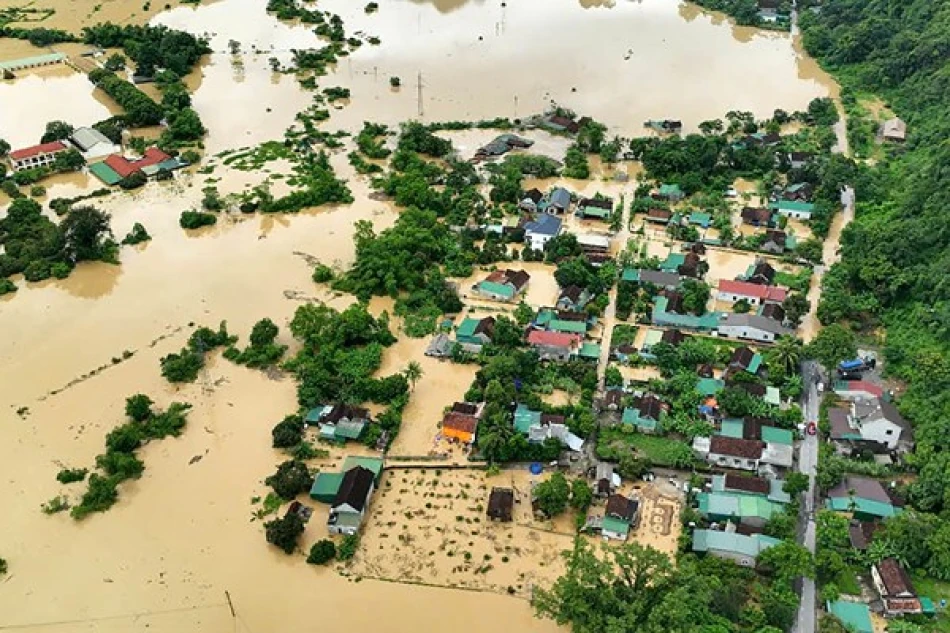
Powerful Storms Batter Northern Vietnam: Residents Brace for Intense Weather Disruptions
Typhoon Yifa Weakens After Killing One in Vietnam, Triggers Cross-Border Flooding in Thailand
Typhoon Yifa has claimed at least one life in northern Vietnam while leaving another person missing, as the storm system weakened from a tropical storm to a depression. The typhoon's impact extended beyond Vietnam's borders, triggering severe flooding across northern Thailand and affecting over 350 people, highlighting the region's vulnerability to increasingly intense weather patterns.
Vietnam Bears the Brunt of Typhoon Yifa
Vietnamese police confirmed Wednesday that one man died in Nghe An province, with four others injured as the typhoon brought destruction to the region. Nghe An, stretching from Vietnam's coastline to the mountainous border with Laos, experienced some of the most severe impacts from torrential rains and flooding.
The typhoon made landfall in Vietnam on Tuesday morning, carrying winds of up to 102 kilometers per hour before gradually losing strength. Beyond the human casualties, the storm caused widespread infrastructure damage, with hundreds of homes affected and agricultural crops destroyed across the affected provinces.
Infrastructure and Economic Impact
The typhoon's passage disrupted daily life and economic activity throughout northern Vietnam. Power outages affected multiple provinces, while agricultural operations—critical to Vietnam's rural economy—faced significant setbacks. Several airports in the northern regions temporarily suspended operations, demonstrating the storm's broad impact on transportation networks.
Thailand Faces Secondary Flooding Crisis
The typhoon's influence extended beyond Vietnam's borders, with heavy rainfall from Tuesday evening through Wednesday morning causing widespread flooding in northern Thailand. River levels rose dramatically, inundating homes and affecting communities across multiple provinces.
Thai authorities reported that more than 350 people were impacted by the flooding, though no fatalities were recorded. The government issued warnings about potential flash floods and landslides, indicating that the crisis may not yet be over.
Regional Weather Patterns and Climate Implications
This latest typhoon event underscores Southeast Asia's increasing exposure to extreme weather systems. The region's geographic position makes it particularly susceptible to tropical storms originating in the South China Sea and Pacific Ocean, with countries like Vietnam and Thailand regularly facing seasonal typhoons and monsoon-related flooding.
The cross-border impact of Typhoon Yifa demonstrates how modern weather systems can affect multiple nations simultaneously, requiring coordinated regional responses. Vietnam's mountainous northern provinces, sharing borders with both Laos and China, often serve as natural barriers that can intensify rainfall and flooding in downstream areas.
Looking Ahead: Preparedness and Recovery
Both Vietnam and Thailand have developed extensive early warning systems and disaster response protocols over recent decades, reflecting lessons learned from previous major storms. However, the agricultural damage in Vietnam and infrastructure impacts in both countries highlight ongoing challenges in protecting rural communities and economic assets.
The weakening of Typhoon Yifa to a depression suggests the immediate threat is diminishing, but authorities in both countries remain vigilant for potential landslides and continued flooding as saturated soils struggle to absorb additional rainfall. Recovery efforts will likely focus on restoring power infrastructure, assessing agricultural losses, and providing support to displaced communities.
 Layla Al Mansoori
Layla Al Mansoori







